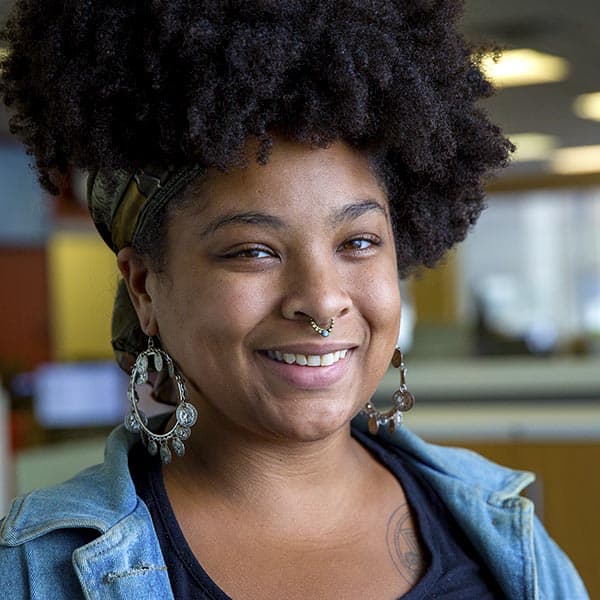Advertisement
Finding Boston's 'Comrade Sisters' of the Black Panther Party
Resume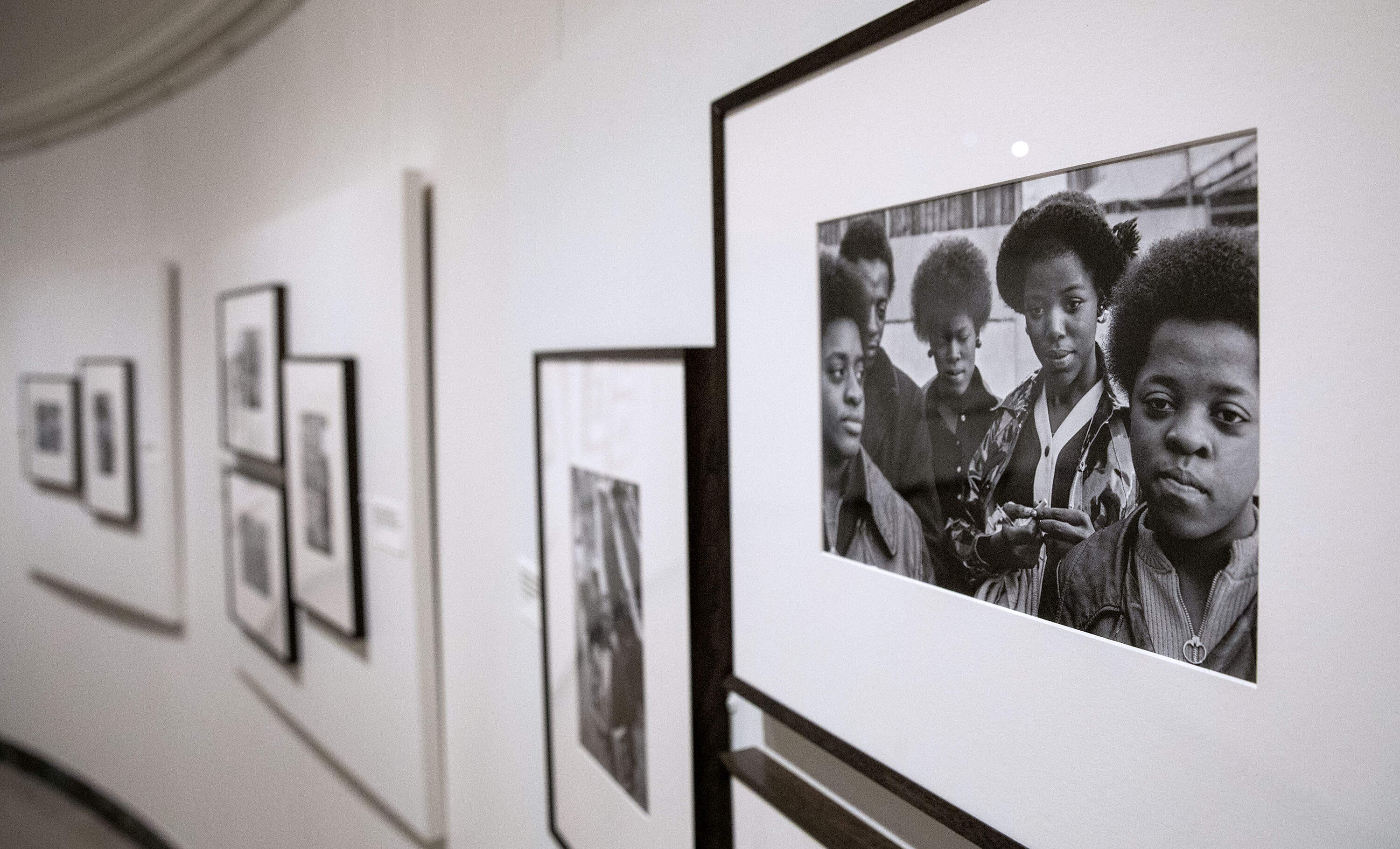
Over 50 years ago, sisters Gail Jones and Jacqueline Hayes had their picture taken by official Black Panther Party photographer Stephen Shames. The sisters don't recall much about that cold December day in 1970. But Hayes does remember Shames positioning her, Jones, their brother Frederick Hayes, and their two friends, sisters Frances and Eva Phenix, for the photo. "We were down in Dudley [Square ]... on some corner," Hayes said. "I think we had to sign something because we were all underage."
Now, that photo is on a wall at the Museum of Fine Arts, Boston. The sisters had no idea the photo had been printed, let alone installed as a part of "Comrade Sisters," an exhibition of Shames' photographs highlighting women of the Black Panther Party, on view through June 24.
“We were young,” Jones said as she looked at the photograph on the MFA’s wall for the first time. They were teenagers at the time, volunteering for the Boston chapter of the Black Panther Party. “[My siblings] used to get up in the morning and go to help feed people at the free breakfast program in Jamaica Plain … we used to be down [in] Dudley, selling newspapers.”
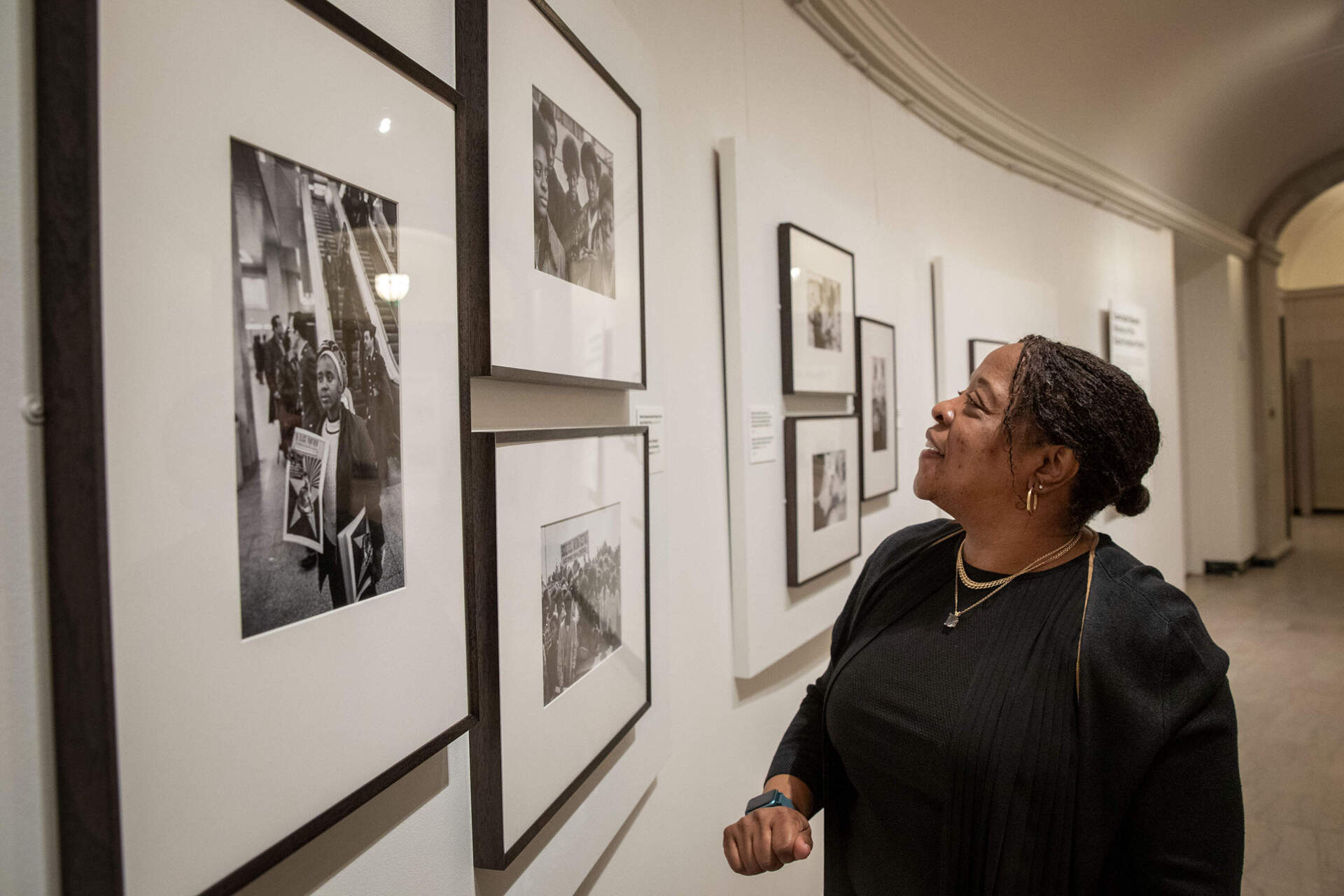
Identifying the photo
The journey to identify the photo started before I even met Gail Jones. I first saw the image a week prior while touring “Comrade Sisters” with curator Karen Haas. For years, Shames captured photos of Black Panther Party members across the country — the exhibit highlights women in the Party. When I saw the picture on the gallery wall, it struck me, partially because it was taken in Boston but more so because all five teenagers in it were unnamed. The photo was just titled "Women of the Black Panther Party." I asked Haas if there was any information on them but there wasn't. “If anyone recognizes anyone, I'll be thrilled,” Haas said.
"Many [of the pictures] never saw the light of day or were printed as photographs," Haas explained. "These are modern prints made from negatives from the 1960s and early 70s." Meaning the people in the photo may have no idea the photo itself existed.
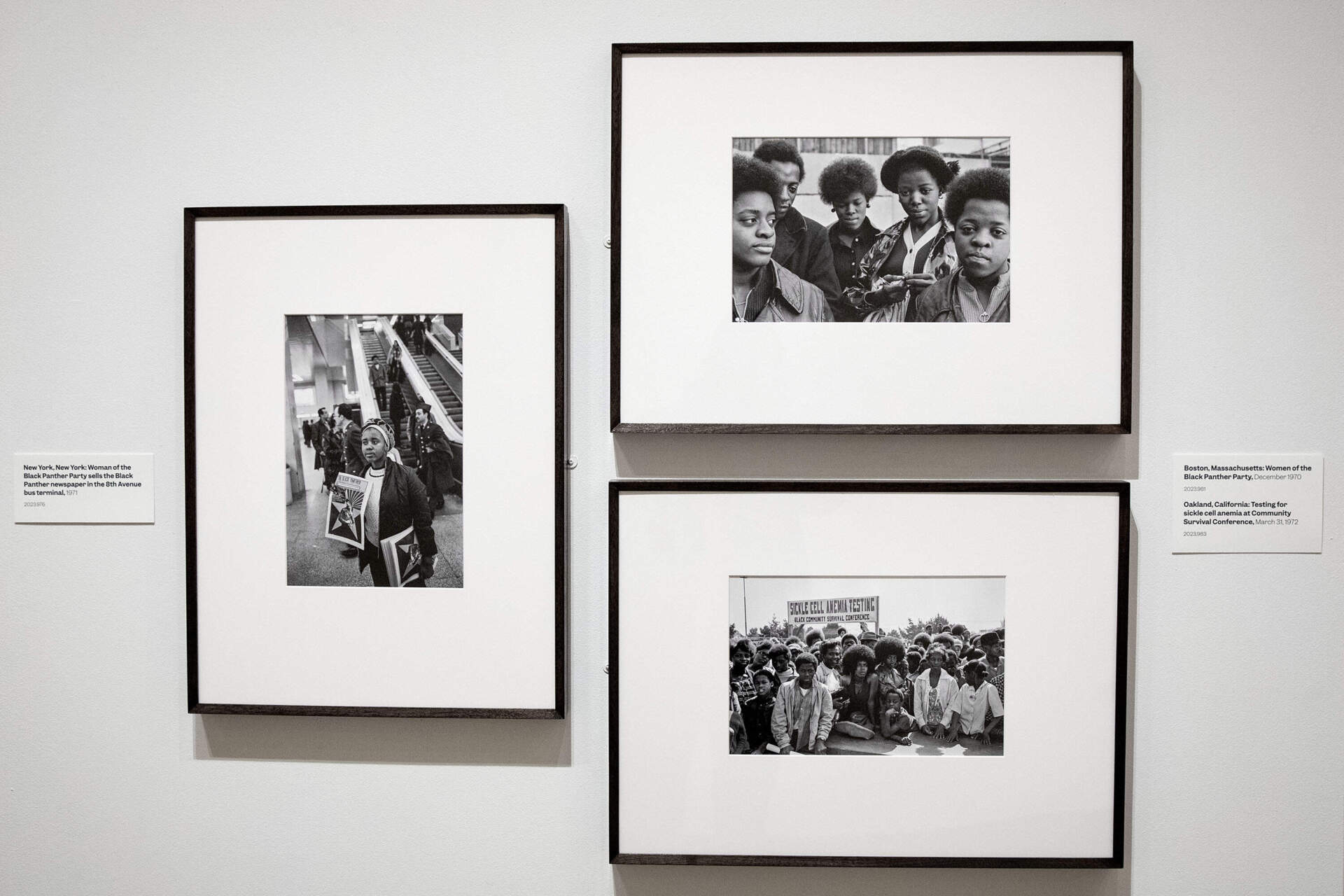
Originally, I'd planned to just write a review of the exhibit. But I knew that I had to try to find the people in the photo. So, I did what any good reporter would do — I posted a picture I’d taken of the photo on Facebook. Family and community members quickly responded and identified three of the teenagers as siblings Gail Jones, Jacqueline Hayes and Frederick Hayes.
Before the post on Facebook, Jones and Hayes had never seen the actual photograph. They had no way of knowing that it was up on a museum wall over 50 years after it was taken. “I'm in total shock,” Jones said. “I don't think I own a picture of me at that age.”
Boston's Black Panther Party
Jones, Hayes and their brother started volunteering for the party at a time when Boston was becoming increasingly more segregated. Predominantly white neighborhoods became more and more Black over the first half of the 20th century. Dilapidated apartments were sold or rented to Black families and white flight in areas like Roxbury and Dorchester ensued. Businesses and organizations left, leaving the growing Black population without access to important resources.
The original chapter of the Black Panther Party was founded in California in 1966 by Huey P. Newton and Bobby Seale. The Boston chapter opened in 1968 to meet the needs of Black communities in the city. Jacqueline Hayes found herself interacting with the party a few years later when she was a 15-year-old student at Jamaica Plain High School. The Panthers had a new office in Roxbury and members of the party were handing out newspapers. “One of the ladies … said, ‘There’s this cute guy … We need to go hear what he has to say because he looks so good,'” Hayes recalled.
In typical teenage fashion, she went down to see who her friend was talking about. They met the young man and ended up staying and listening to what he had to say. "He was talking all about the Party and then that led to 'Well, we got an office up the street. You can come and you can volunteer,'" Hayes recalled. "So it started out like that. And once we got in, we were in.”
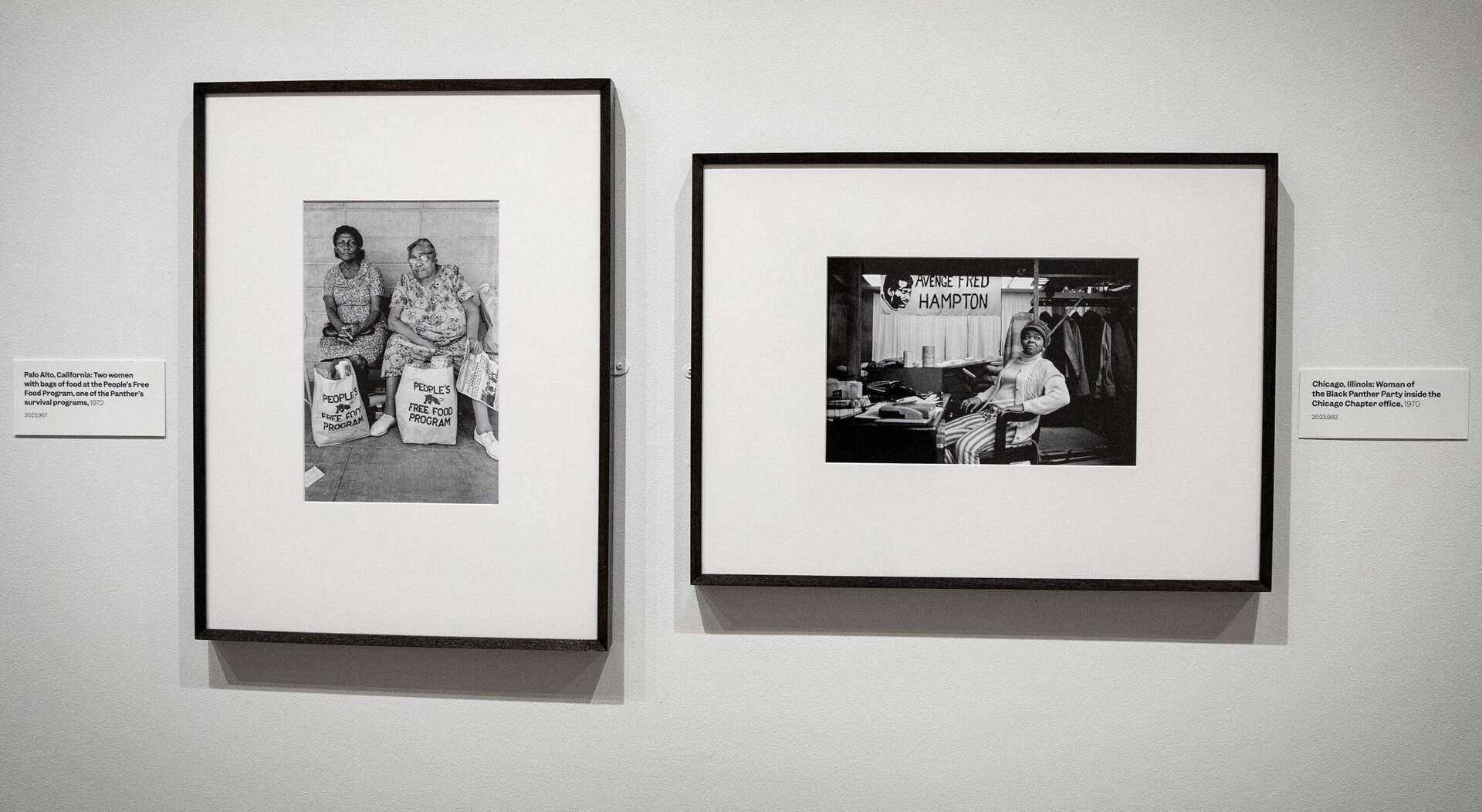
Jones joined her siblings after a friend died of an overdose. It had a profound impact on her. “That was a very tough time in my life,” Jones said. “I started running with my brother and sister … And when they started going to the Black Panther Party, it was something that gave me hope again … It helped to build me back up from that devastation.”
The siblings did a variety of things as volunteers. Jones handed out Black Panther Party newspapers at what is now called Nubian Square. Hayes and Frederick worked at the local free breakfast program that operated out of Jamaica Plain. “And then within like a week or two weeks, we were running the program. I mean my brother had the keys. We were in charge,” Hayes said. “We were in a big gymnasium or community room and I remember my brother, he would go in there and he had a sound system. He had that music pumping.”
Women like Jones and Hayes were involved in much of the community care work the Panthers provided. Over 65% of the Black Panther Party’s membership was comprised of women. Though they were volunteers and not official members, the siblings found value in the work they did. They also attended political education classes. “We learned so much,” Hayes said. “We’d go to school and say ‘How come you didn’t tell us this? You just said that we were slaves.'”
After the party
After a few years of volunteering, the siblings stopped. Leadership within the party grew tumultuous and members across the country were being arrested or harassed by police. “Things got hot,” Hayes explained. The Boston Black Panther Party shuttered its doors in 1972. At the time, branch offices of the party were ordered to close and members asked to go to Oakland to support Bobby Seale and Elaine Brown’s electoral campaigns.
Though they stopped volunteering for the party, the siblings never forgot the things they learned or experienced. Jones went on to work for the MBTA as a drug and alcohol coordinator and was an associate minister at a local church. Hayes moved down to Florida in 2015 and helped lead a campaign to restore and preserve the Whispering Souls African American Cemetery, where two of the siblings' grandparents are buried. She is also the president of the board for the nonprofit of the same name. Hayes says that Frederick, who passed away in 2016, was well-known in Boston for the work he did in the community. "He was the one that was always in the news," she said.
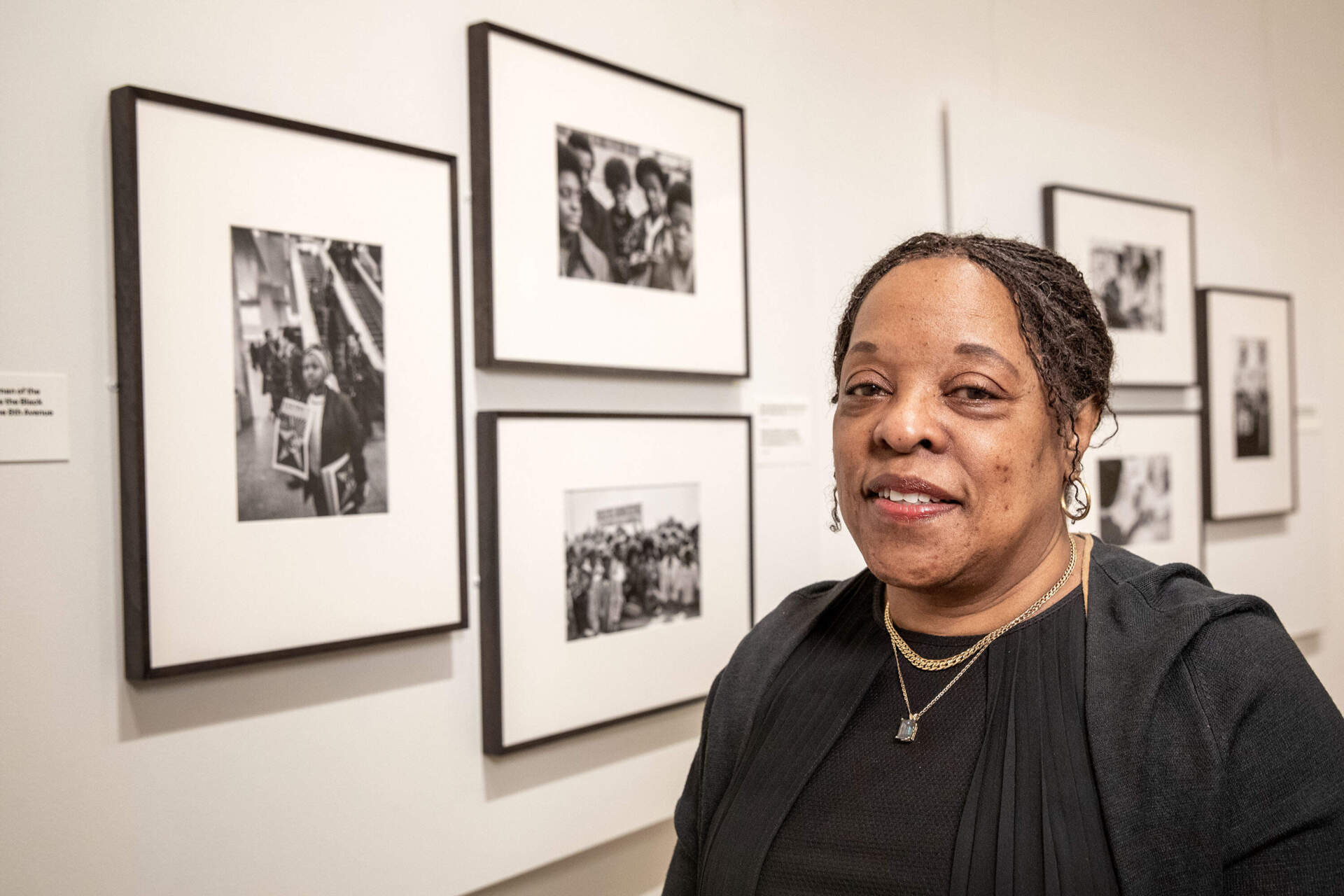
Eva Phenix, another woman in the photograph, is living with dementia. Jones visited her and showed her the picture. “She said, ‘That's us Gail!’ And I said, ‘I know,'” Jones shared. “I was so happy to show her the picture because she recognized everyone. So that was another happy moment. It was awesome.”
No longer unnamed
There’s no changing the title of the photo, but the MFA has updated the label with the names of those in the image. “I'm just incredibly excited that this story is getting told,” curator Karen Haas said. “I never imagined we'd actually be able to put names with the faces that we've all been looking at these last few weeks.”
For Jones and Hayes, seeing the photo has been a full-circle moment of sorts. "I'm glad that I can look back and see the work that we did at such a young age," said Jones. "We made a difference and that's good. I'm sure we made our mother proud."
And it all started with a simple Facebook post. "That picture has just brought up so many memories," said Hayes. "I'm so glad you did that post."
So am I.
